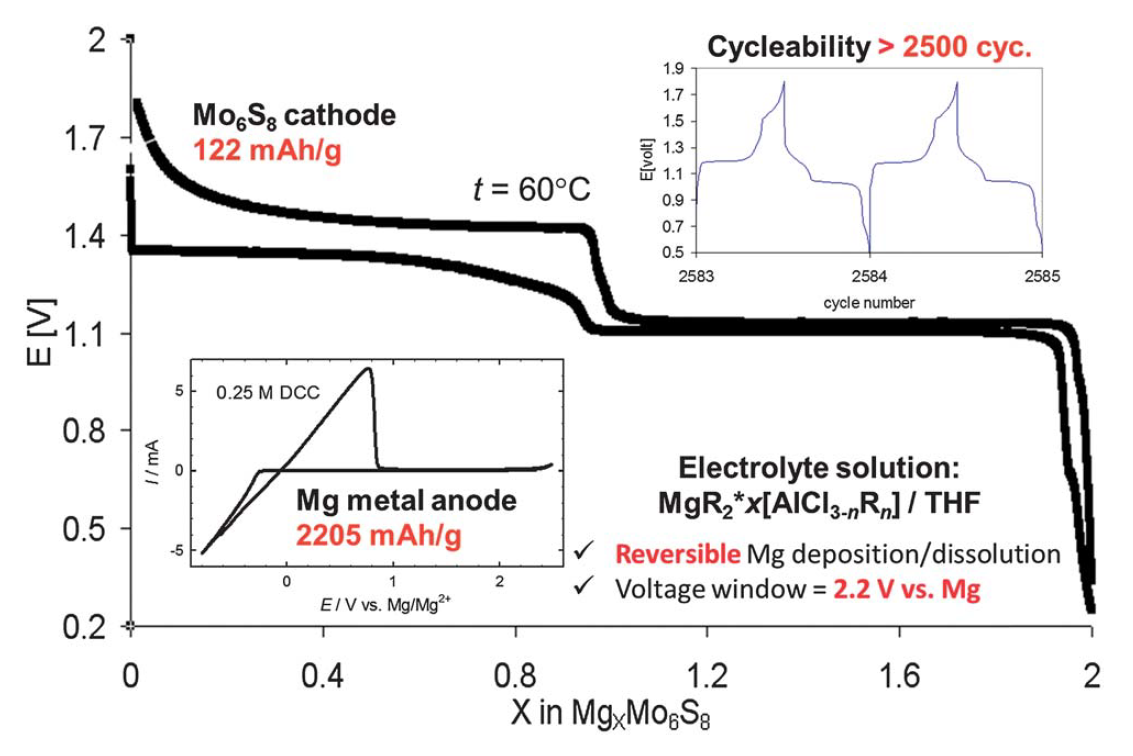The first working Mg rechargeable battery prototypes were ready for presentation about 13 years ago after two breakthroughs. The first was the development of non-Grignard Mg complex electrolyte solutions with reasonably wide electrochemical windows in which Mg electrodes are fully reversible. The second breakthrough was attained by demonstrating high-rate Mg cathodes based on Chevrel phases. These prototypes could compete with lead–acid or Ni–Cd batteries in terms of energy density, very low self-discharge, a wide temperature range of operation, and an impressive prolonged cycle life.
The ternary molybdenum chalcogenides MxMo6X8 (X = chalcogen), known as Chevrel phases, constitute an outstanding family of materials presenting numerous and spectacular properties. More than 100 examples of these compounds have been synthesized thanks to their versatile crystal structure. Numerous variants are found, from the binary material formed just by the molybdenum clusters Mo6X8 leaving a three-dimensional lattice where the third element M can be inserted, up to a condensation of clusters giving rise to a monodimensional material.
Other fundamental features are found, such as the coexistence of magnetic order with the superconducting state. These features are still of interest for the scientific community, but other potential applications are now foreseen, such as their use in batteries, catalysis and thermopower technology. We recall herein some basic characteristic of Chevrel-phases, mentioning several important families, their crystal structure and mode of elaboration. This contribution being focused on the superconducting properties, we put an accent on some fundamental aspects, such as the structural and electronic transitions, the vortex lattice, their granular behavior, critical current densities, upper field and anisotropy, to finally discuss the so-called unconventional superconductivity, classifying these materials among the ‘‘exotic superconductors’’ and making a parallel with other superconductors which, in spite of their quite different electronic and crystal structures, present similar features. Chevrel phases have a long and incredible past as outstanding materials for basic and applied research but, in addition to that, they have a bright future ahead because of a large range of potentialities.

Energy Environ. Sci., 2013, 6, 2265–2279

shows an operation scheme of the first rechargeable Mg battery prototypes, which is the outcome of the 2nd breakthrough. The basis is the Mg organo-haloaluminate complex (denoted as dichloro-complex (DCC)) electrolyte solution that exhibits anodic stability approaching 2.2 V vs. Mg.




